Still in Arizona, we continued traveling west on Route 66 (literally I-40, but I like to know it’s as close to the original Mother Road as we can get!), hoping to reach Grants, New Mexico before dark.
Our plans had changed in the last week on this trip. After visiting Zion National Park a week or so ago, we had decided not to venture further into Utah to a couple of National Parks that were on our itinerary. It was disappointing in a way but relieving in another, to avoid the steep winding mountain roads we had come to dread, pulling the travel trailer. This present road was straight, with few hills or curves but often bumpy, and we had often been accompanied by winds whipping across these low lands. It was interesting to look ahead as the terrain and landscape changed – wondering or predicting what we might see.The most disappointing thing to me about not visiting those parks as we had planned was missing out on the petroglyphs. I had researched the areas, having detailed notes of locations and trails. How I wanted to see the markings, writings, drawings, symbols of indigenous peoples from hundreds – even thousands of years ago. It’s remarkable to contemplate.
We travel with GPS set up on the dashboard monitor of Ron’s Dodge Ram. We hear the directions given by our “GPS lady.” (Ron calls her Siri. Not sure if she’s related to our Iphone Siri, or not!) The monitor map clearly identifies the mileage before our next turn – right or left – which lane we should be in – all the good stuff. But I also carry a Rand McNally Atlas. On this trip, I used the same atlas I had used in our Northwest trip of 2021. Not much had changed – roadwise, and it always presents the “big picture” as we travel. It was spotted with blue and yellow sticky notes – the blue ones reminiscent of former days – the yellow ones, I was still moving around and adjusting to our updated itinerary!
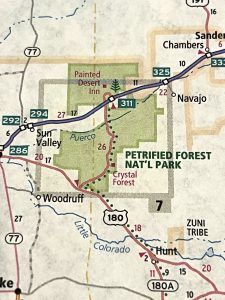 Now I was focused on the Arizona state map, one of the first in this atlas. We continued west past Holbrook and my eyes suddently fell upon the light green blocked area just ahead of us on the map: Petrified Forest National Park. I quickly grabbed my National Geographic Issue on the National Parks. A page was dedicated to this park. I read about the “Painted Desert,” and the Puebloan rock art . . . archaeological sites, AD 1200-1400 . . . petroglyphs.” Petroglyphs!
Now I was focused on the Arizona state map, one of the first in this atlas. We continued west past Holbrook and my eyes suddently fell upon the light green blocked area just ahead of us on the map: Petrified Forest National Park. I quickly grabbed my National Geographic Issue on the National Parks. A page was dedicated to this park. I read about the “Painted Desert,” and the Puebloan rock art . . . archaeological sites, AD 1200-1400 . . . petroglyphs.” Petroglyphs!
This park was too much to pass up! And right on our route – Route 66.
The balance of our day was spent investigating the northern portion of this remarkable park. Being in the middle of nowhere is what made this park so fascinating to us. We hadn’t expected what we found.
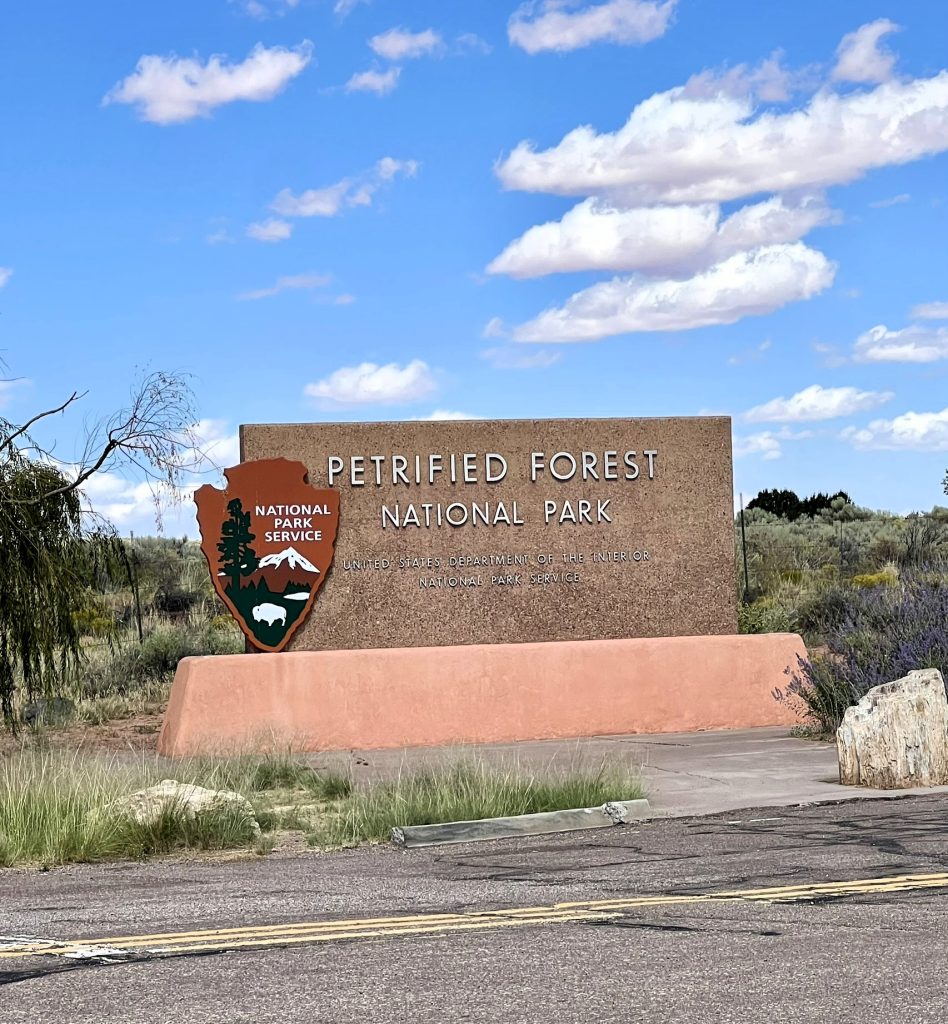
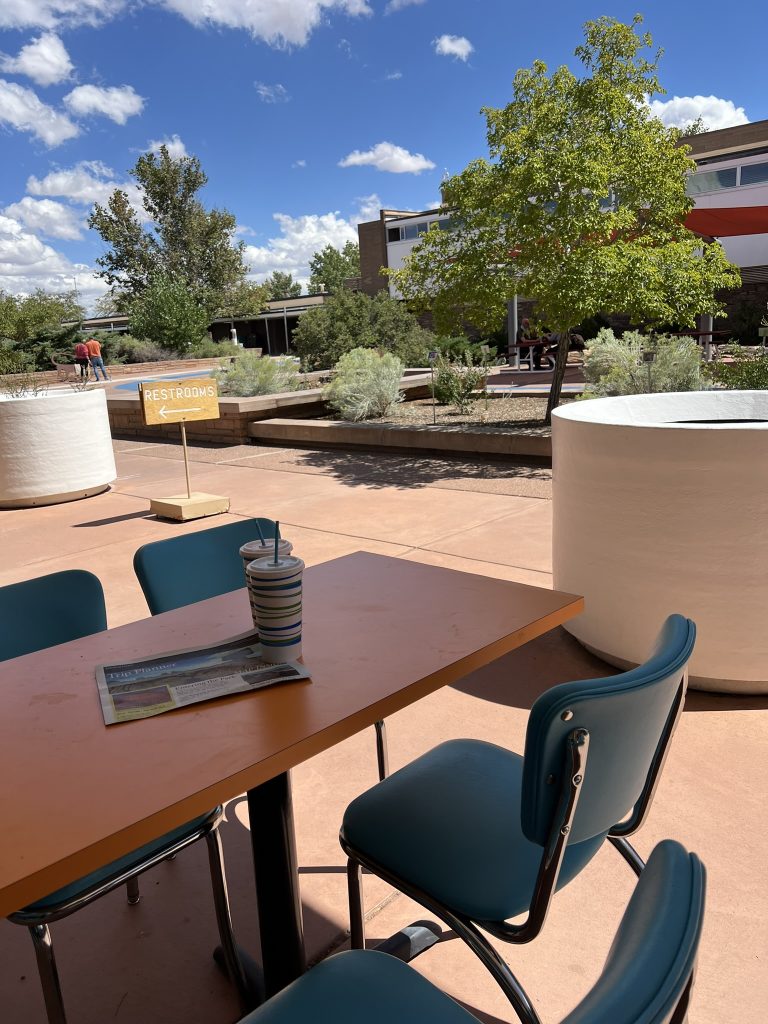
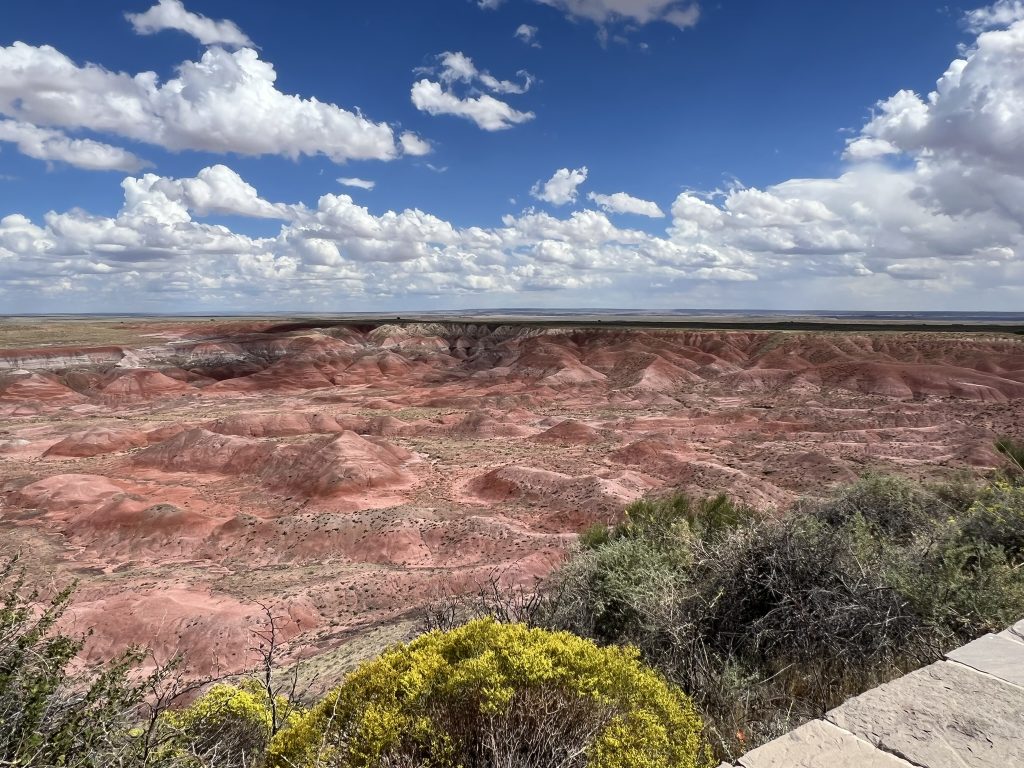
The Painted Desert Inn was the first stop. I just can’t explain how fascinated I was with this place. It’s a long story – much too long to tell now, but in the 1930’s the CCC renovated the original building and in the 1940’s it was owned by the Fred Harvey Company. The Harvey Girls lived and worked here. It’s a story I’d like to use in a novel someday. My mind was spinning with ideas as Ron and I self-toured this place. Kitchen, Dining Rooms, Soda Shop. Wow! And a Navajo Park Ranger was present to share every little detail with us. He really knew the stories! I wished I had hours with him.
Ponderosa pine and aspen poles cut from nearby Arizona forests were used for roofing beams and smaller crossbeams (savinos). Light fixtures were hand-made from punched tin, and wooden tables and chairs were given American Indian designs. The beautiful skylight panels were hand-painted by the CCC workers, designs of prehistoric pottery. Concrete floors were etched and painted with patterns based on Navajo blanket designs.
The first petroglyph we saw was this mountain lion. It had been removed from the Petrified Forest landscape some years ago – not sure why. The drawing was about 3 feet long!
It was here at The Painted Desert Inn that I met Virginia. Virginia is mostly Navajo – other Native American lineage also, and I’m ashamed I couldn’t catch it all. I was so excited to meet her. and fascinated with her jewelry and her story that my mind was swimming! Virginia’s grandmother had lived on the reservation. Virginia was in the gift shop of The Painted Desert Inn, making Navajo jewelry. I had passed up other opportunities to buy original pieces on this trip, and I was not about to pass up this opportunity. I did purchase a turquoise necklace Virginia had made. But I was just as interested in her story as her beautiful hand work. Virginia was a believer in Christ. I could see the light of Christ in her eyes! We talked about family and our lives in this short time we had together. Like me, Virginia had begun college after her children were in school, and like me, Virginia had taught at public schools for some years. She also had taught at a reservation in Alaska and was in Administration before her retirement. The body of Christ is strong, loving, and covers all cultures, genealogies, and nationalities. Before we parted, I gave Virginia copies of my books, and she gave me a hug, which I cherish.
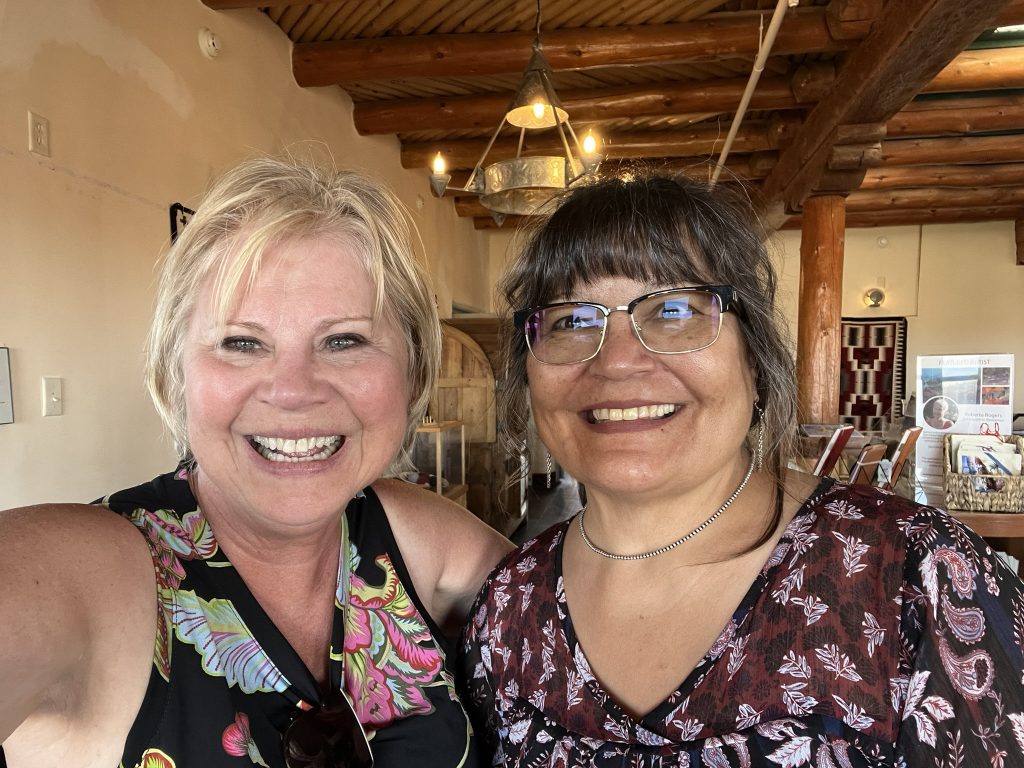
I had prayed for opportunities to gift my books to people along the way. But I hadn’t prayed for this unexpected opportunity to see Petroglyphs!
The petroglyphs were created by ancestral Puebloan people living, farming, and hunting along the Puerco River between 650 and 2,000 years ago. As we drove the road through the park, we saw hundreds. Hundreds! The signage calls these petroglyphs whispers from the past. Oh yes. When you see them, if you’re quiet, if you contemplate, you can hear the whisper. You can imagine the stories they tell.
I listened. And Jesus whispered to me of my own story:
Kathi, I love to give you the desires of your heart.
You don’t even have to ask!
Yes, He had given me a desire of my heart today – the petroglyphs. He loves to give us the desires of your heart! And He loves it when we ask, but sometimes we’ll find He blesses us, and we don’t even have to ask!
This one is a migration symbol, an important theme in Puebloan oral history:
We found it near the ancient Pueblo Community where once there were a hundred homes :
As I had cried at my first sight of the Grand Canyon, I squealed with delight at the first petroglyphs I saw this day. I find myself looking at others, expecting them to share in my delight, but quite often, they just stroll on, wondering why this lady from Michigan is so enthralled! (I’m used to that response!)
The first petroglyphs we saw were close – maybe 6 feet away! At one lookout, we viewed over 600 petroglyphs just below us maybe 25 yards distance.
And as we drove, the Painted Hills changed to Blue Mesas . . .
. . . and it was at this point we had to turn back. The day was ending. We needed to move on to Grants, New Mexico before nightfall. So we went back to the north entrance to I-40, but as we did, we passed the original Route 66, which had crossed this beautiful park – this beautiful painted desert – some years ago. All that remained was a sand trail now. An old rusted car was the only vehicle remaining on this once-busy highway.
The sun was setting behind as we once again entered I-40, nearing New Mexico. 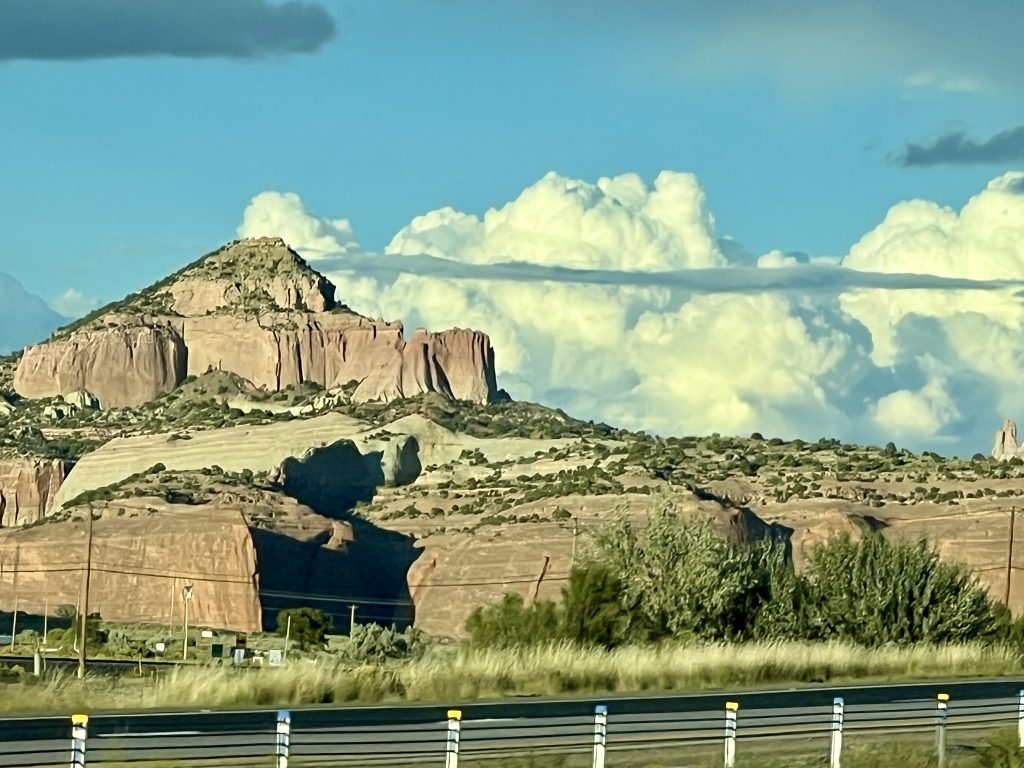
A Corvette had pulled off the road. We stopped to see if they needed help.
“Gee, those guys look familiar,” Ron said as we walked near.
Read the next post, Where is Everyone? (Route 66 Chapter 4)
Click here to read Route 66, Chapter 1Get Your Kicks . . . Route 66 (Chapter 1)

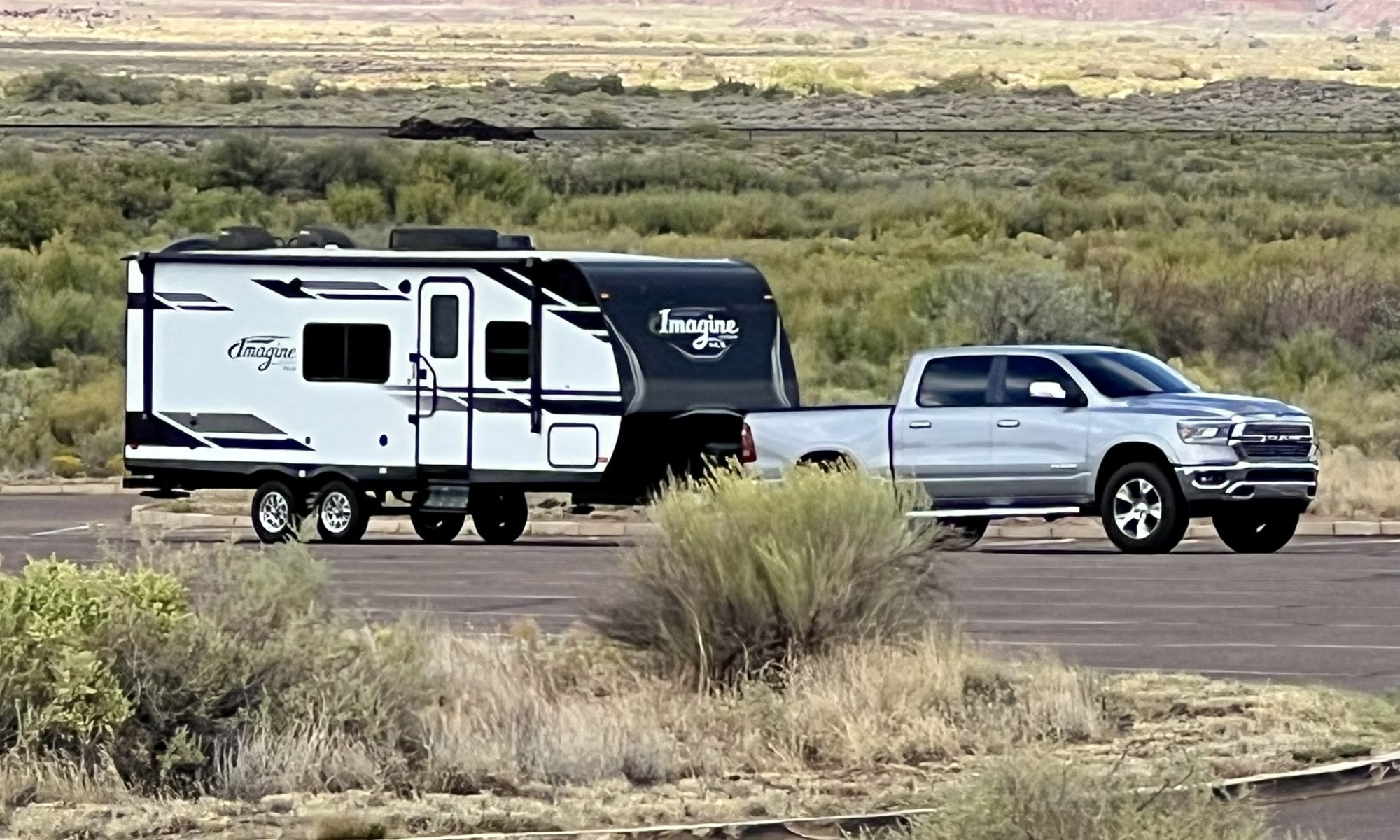
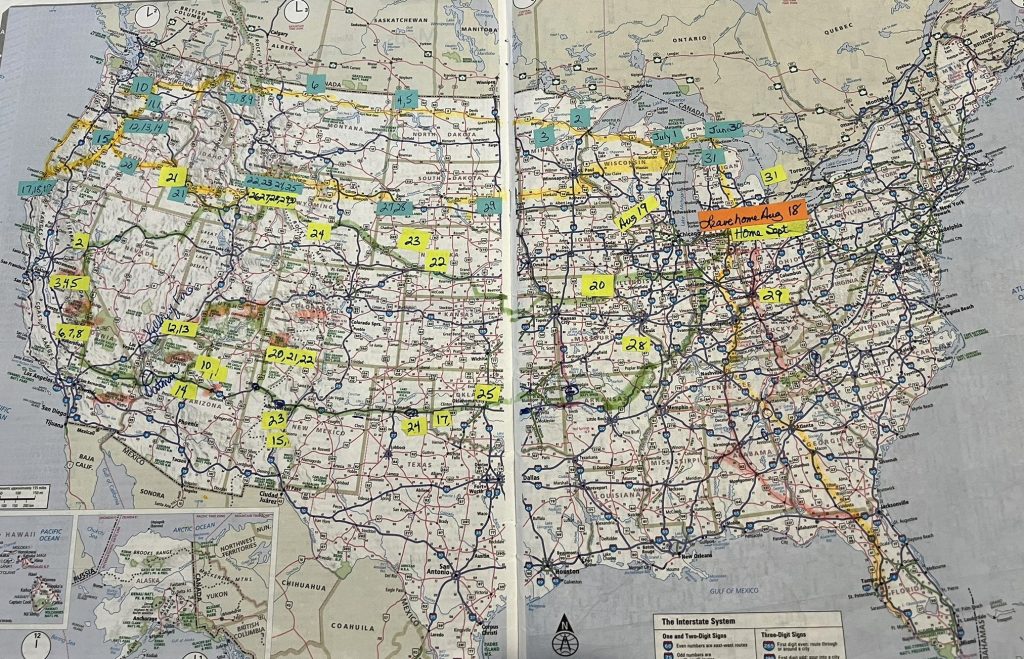
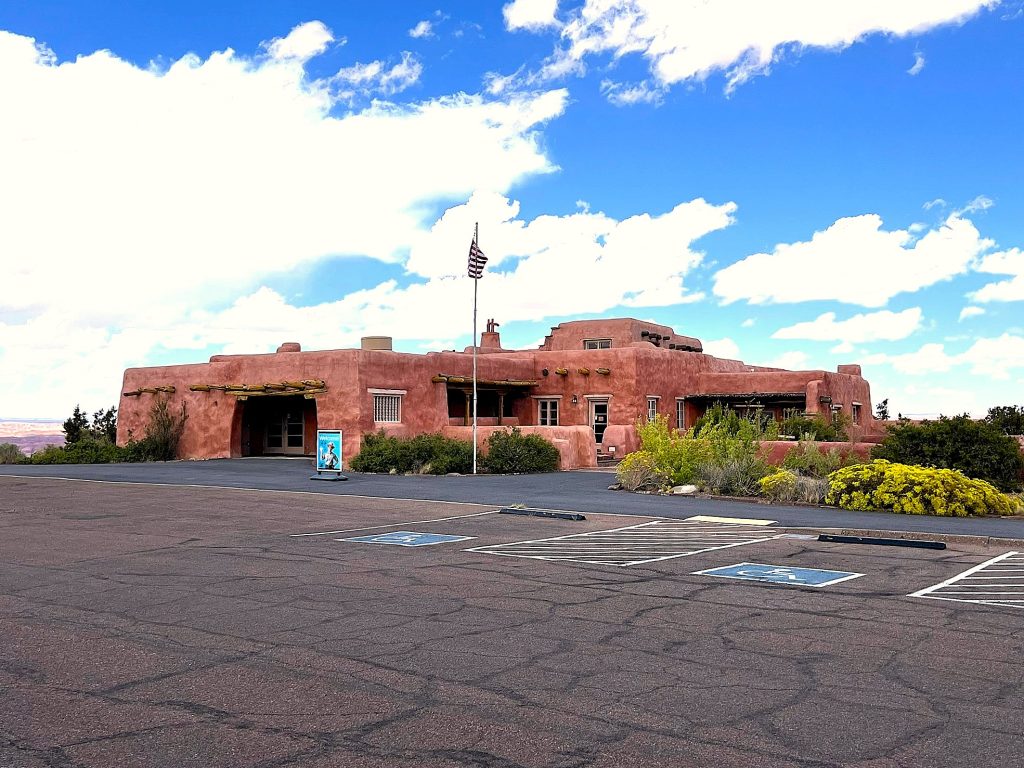
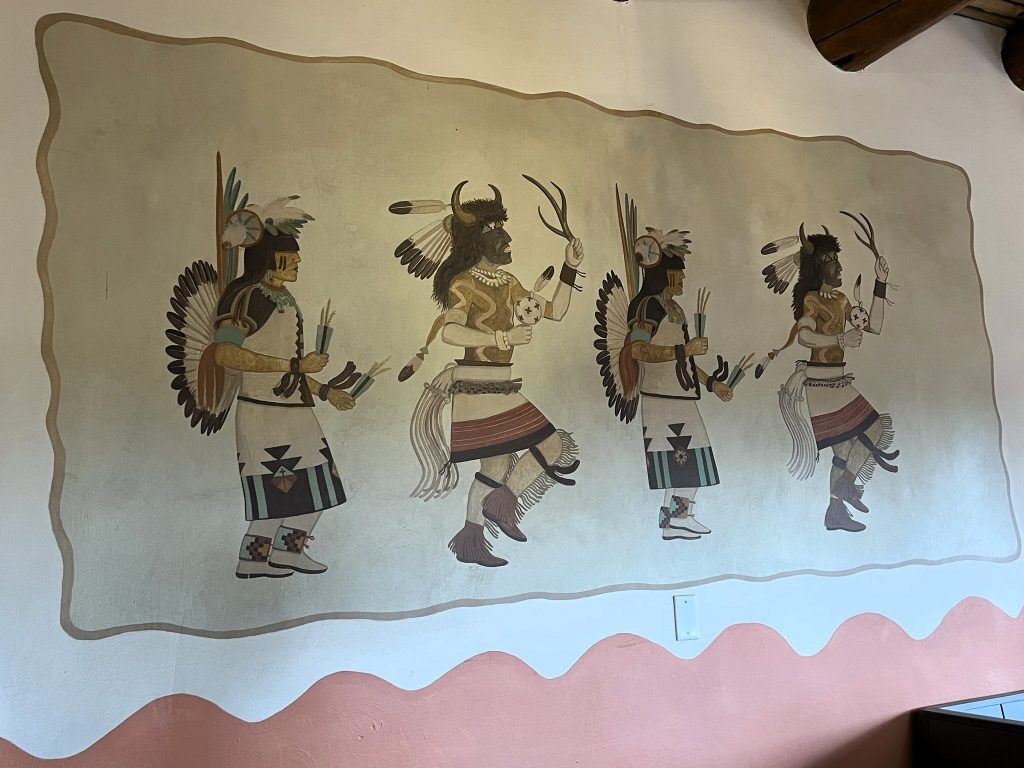
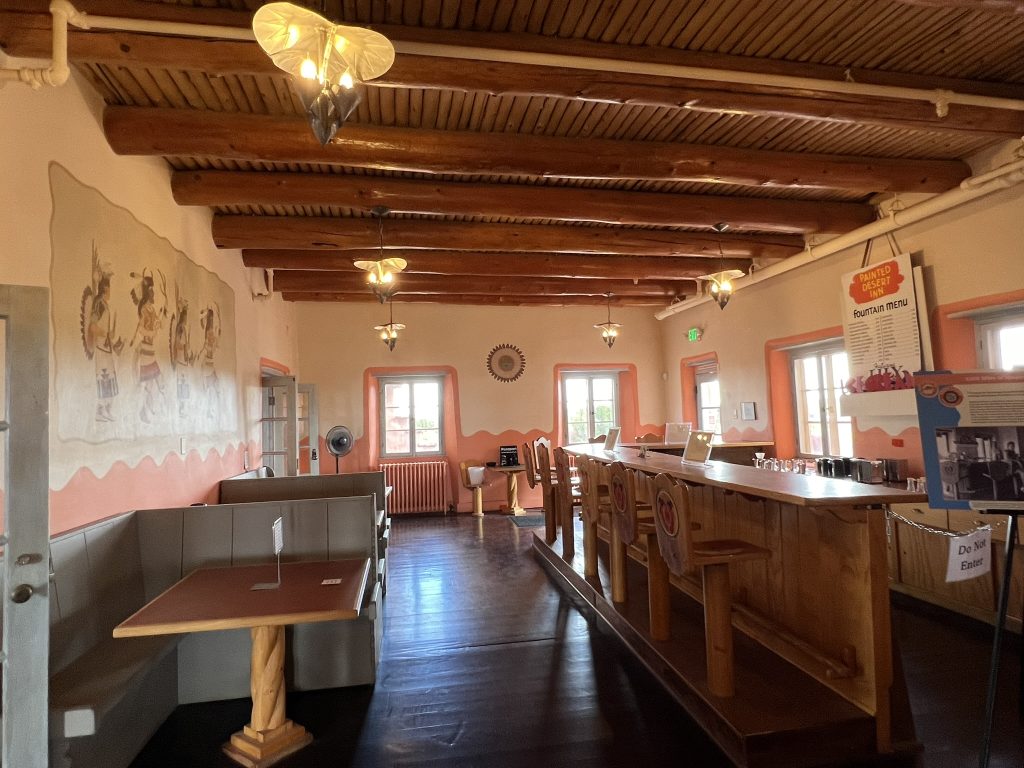
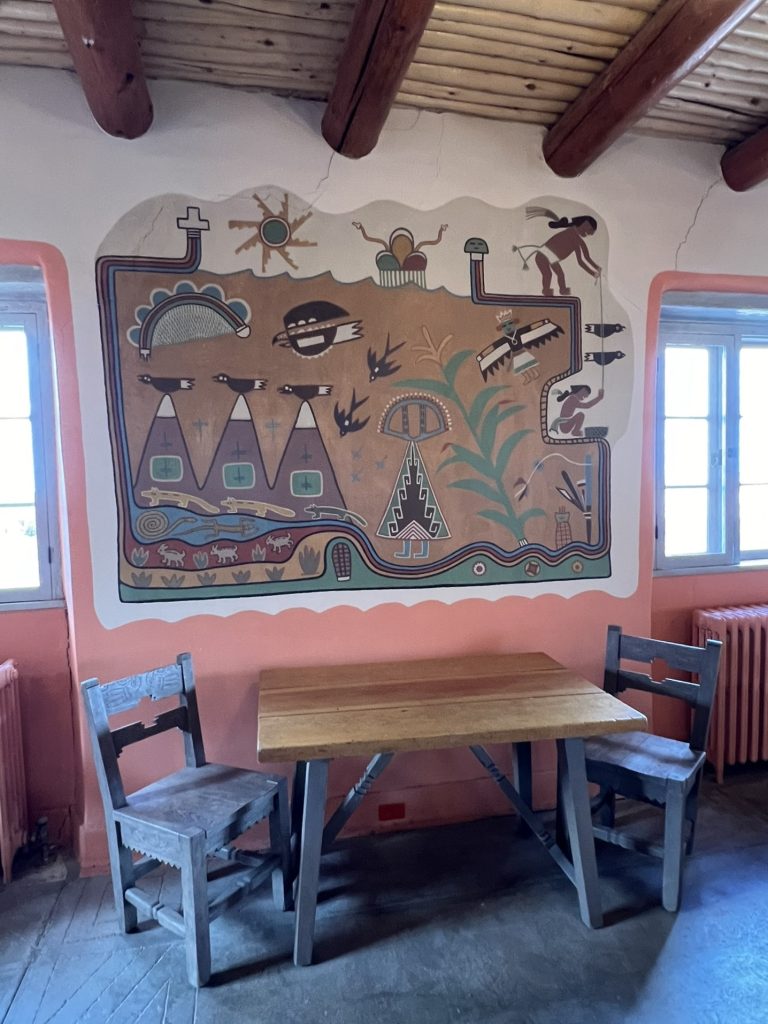
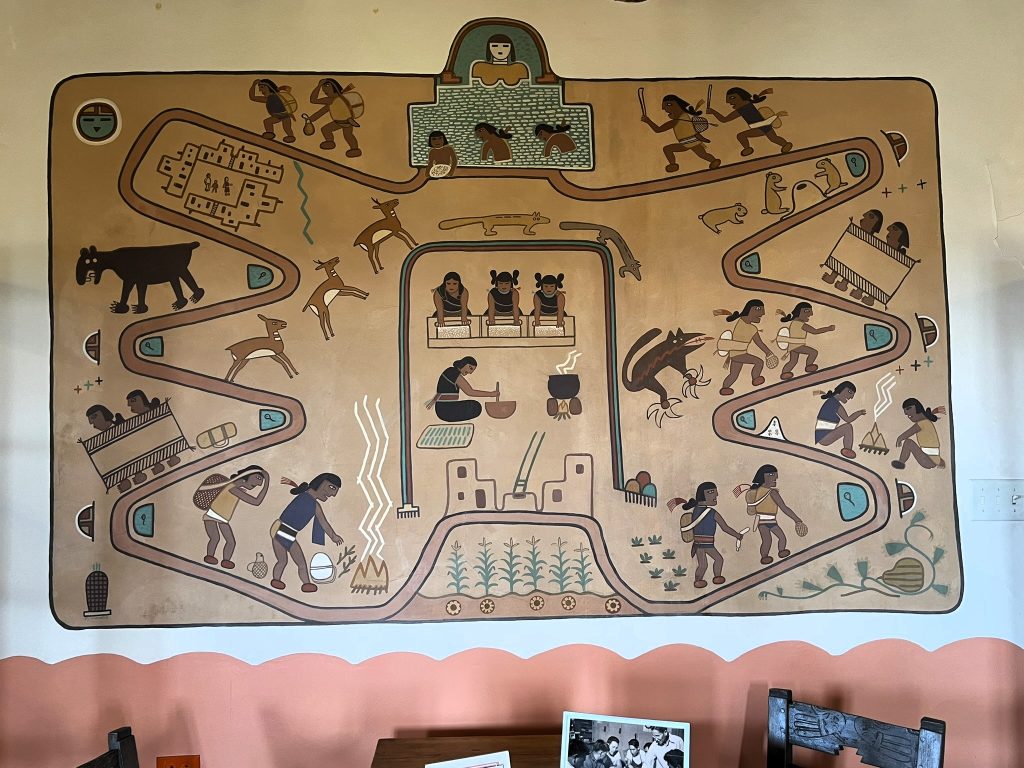
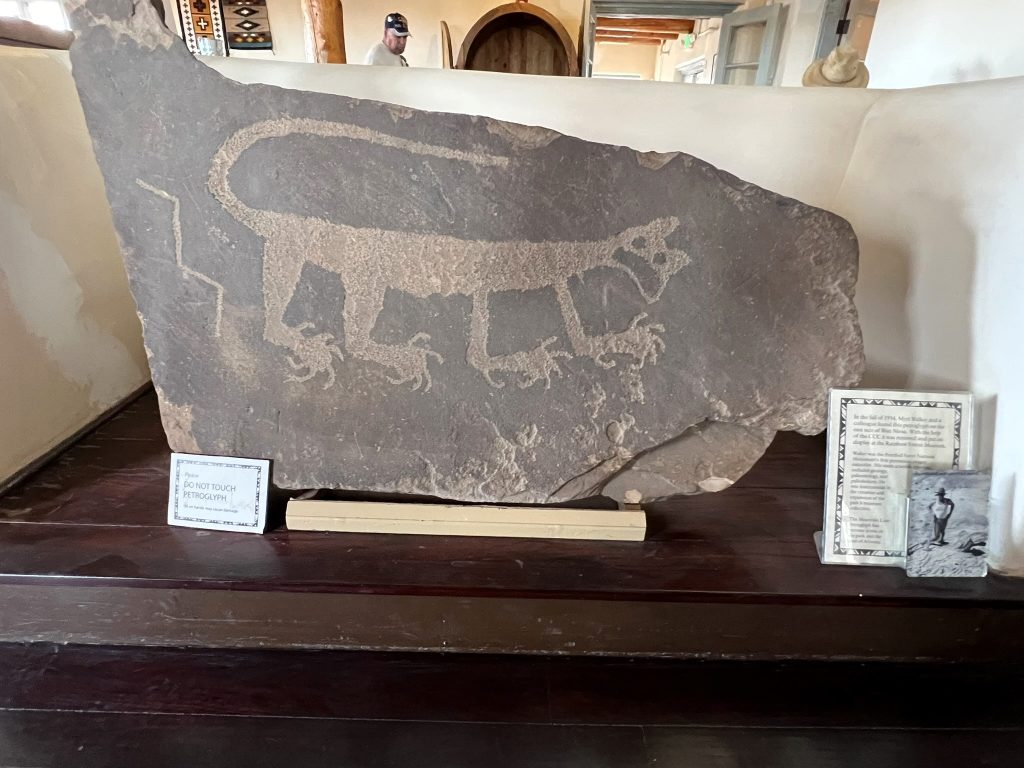
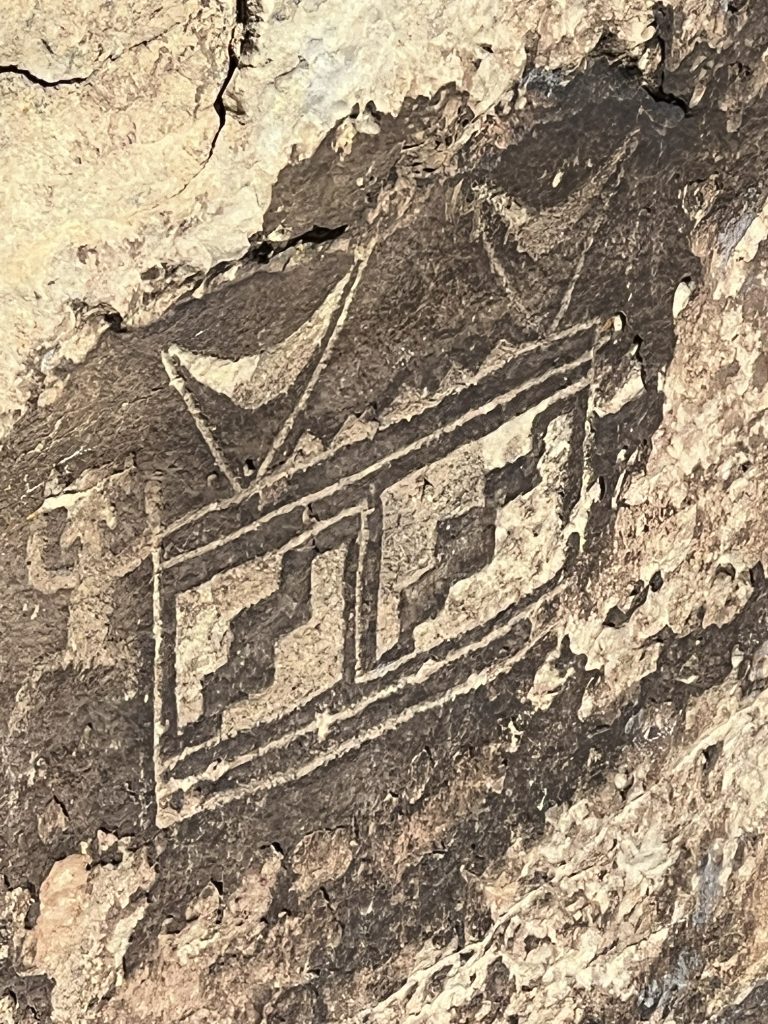
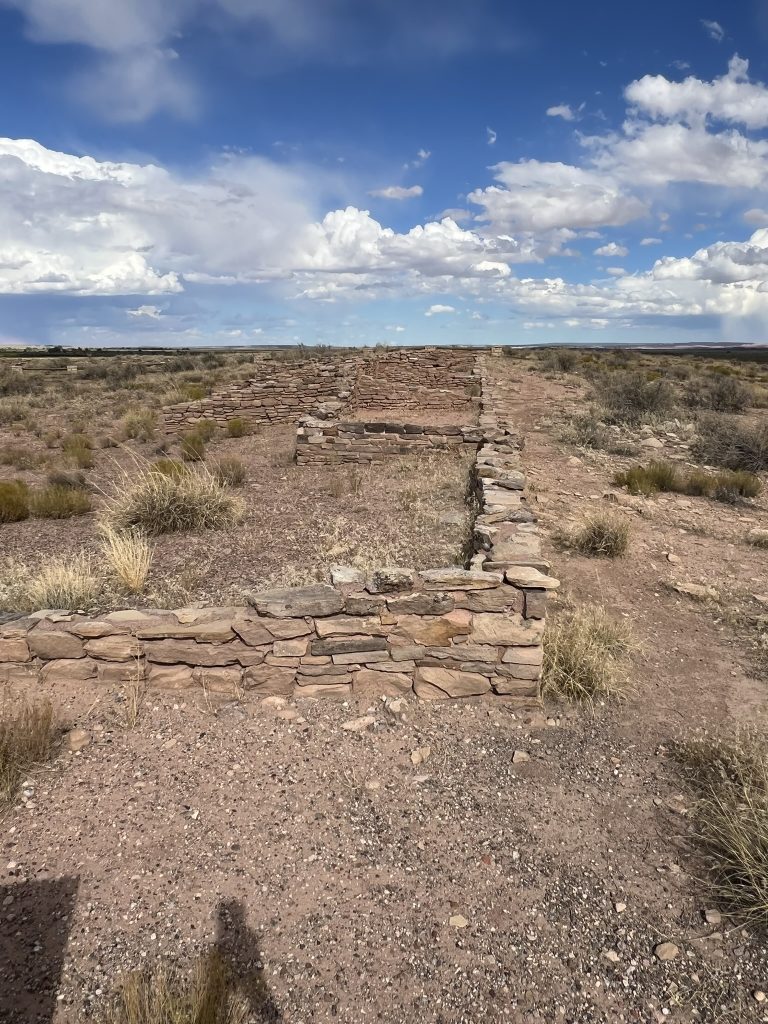
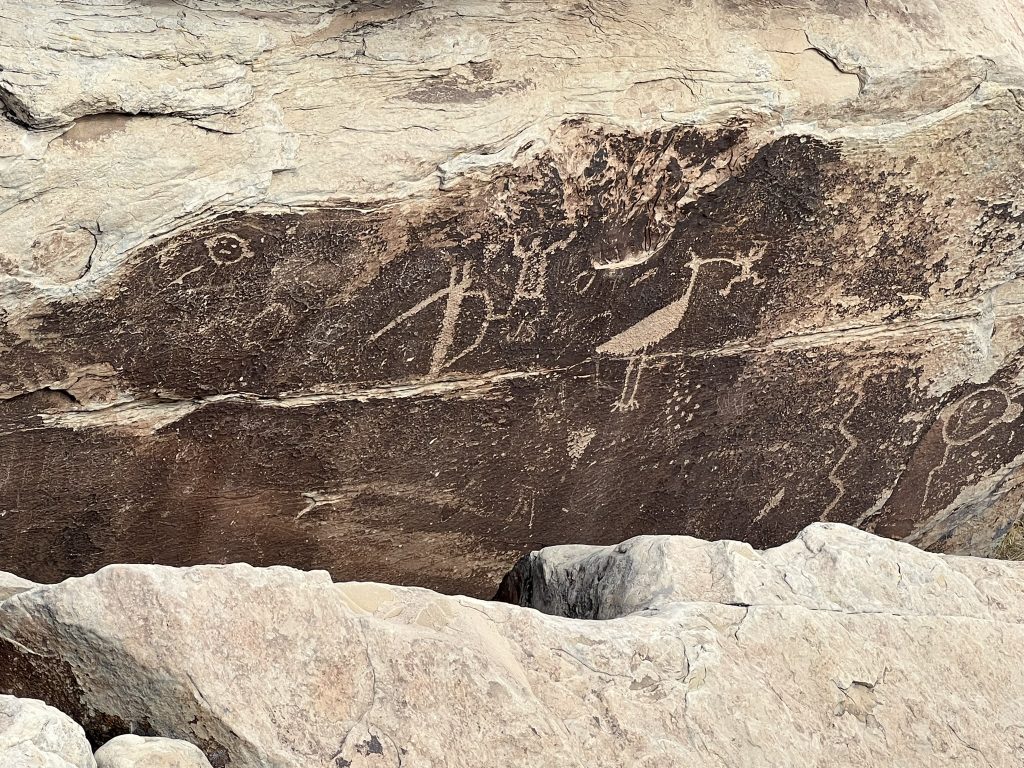
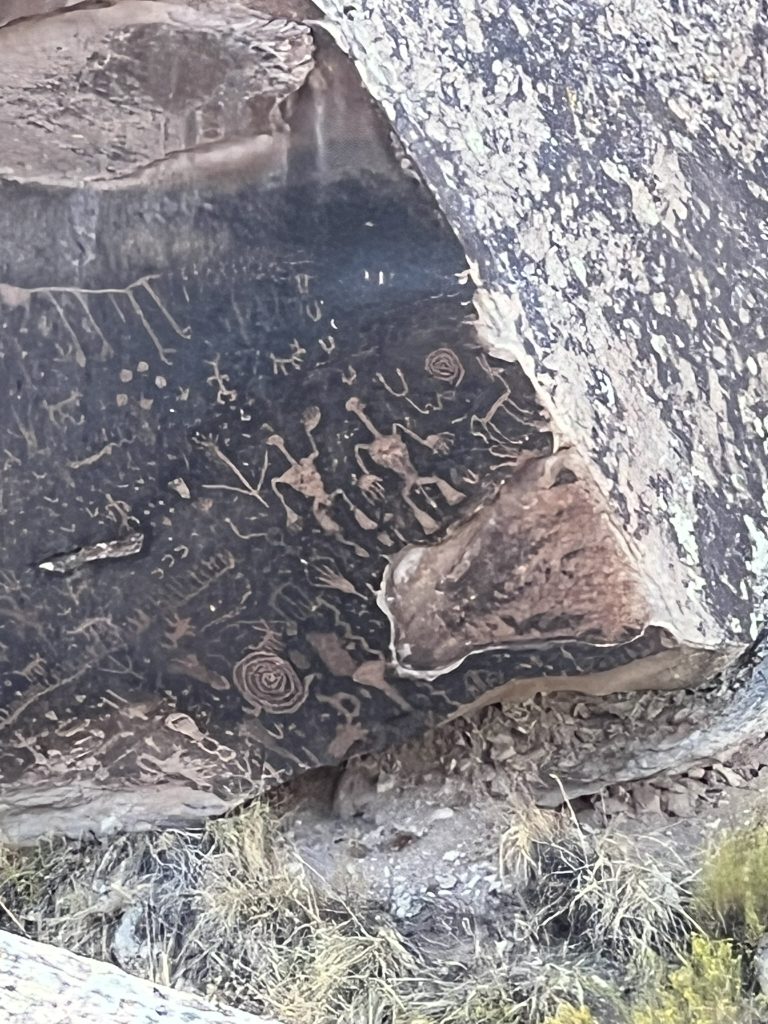
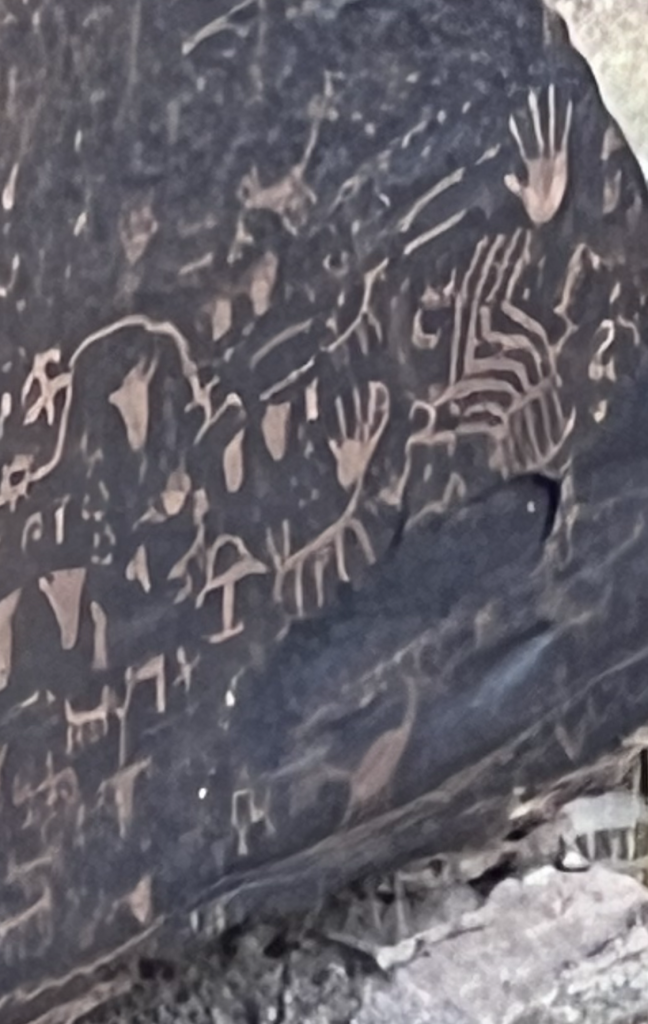

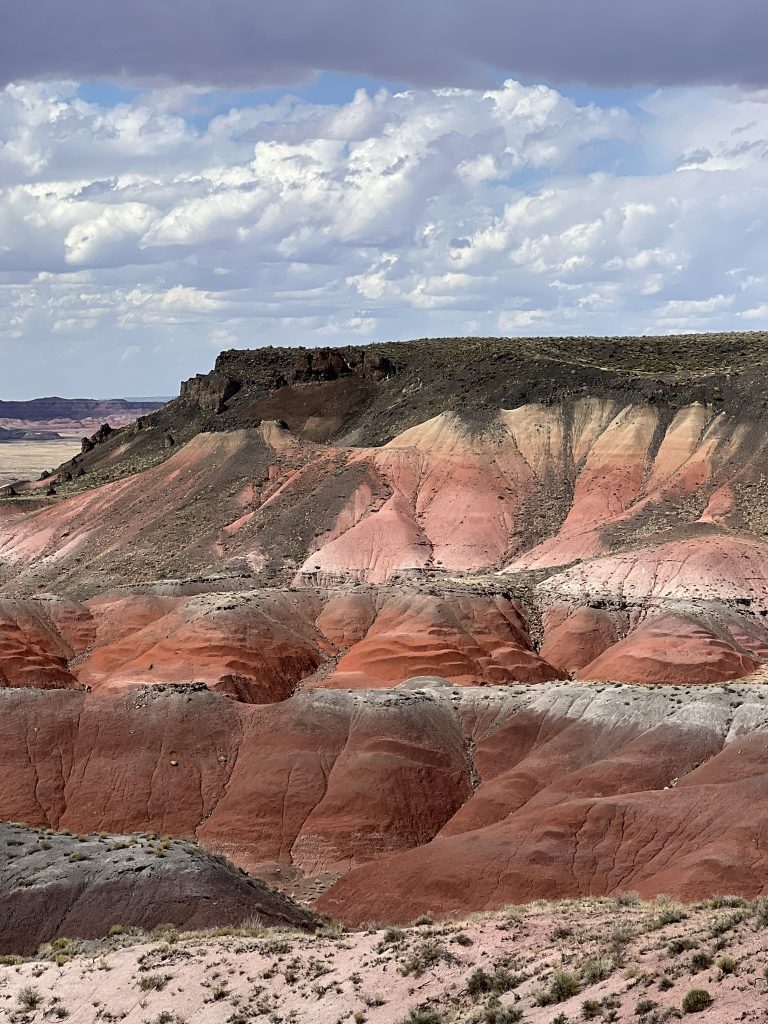
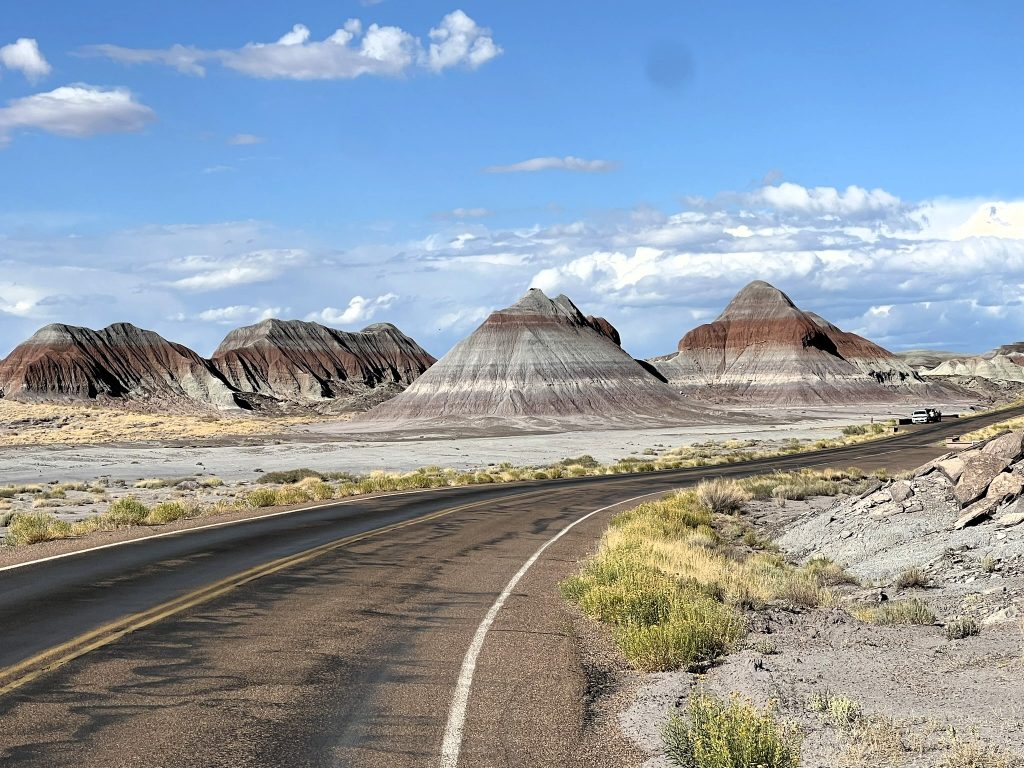
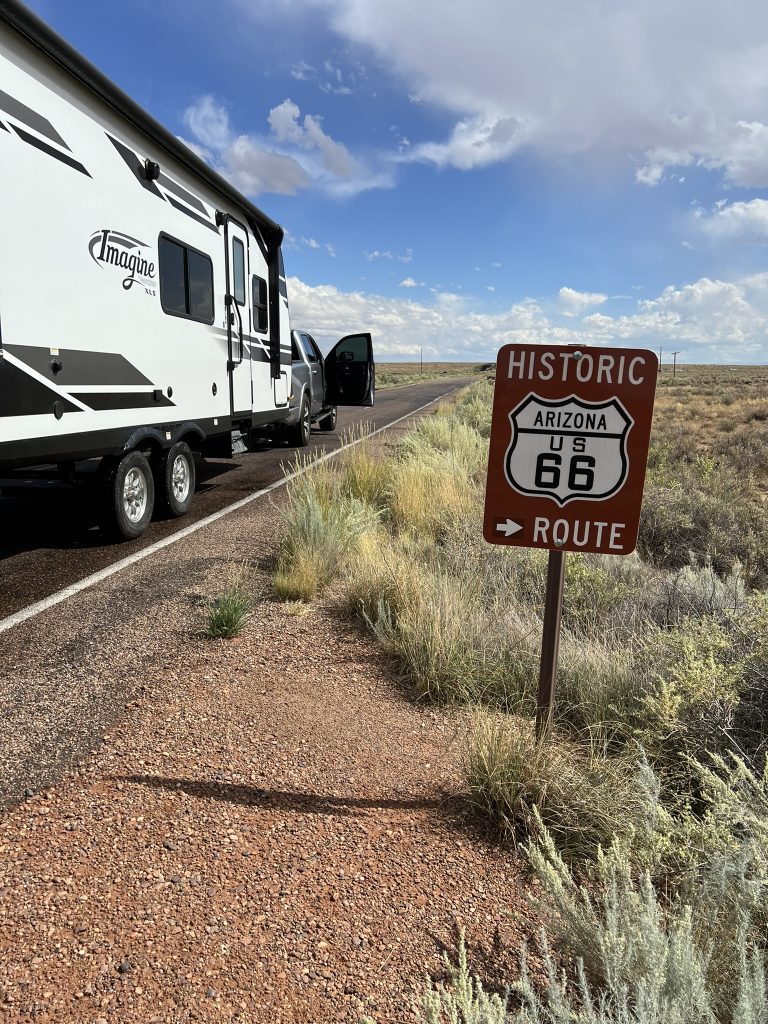
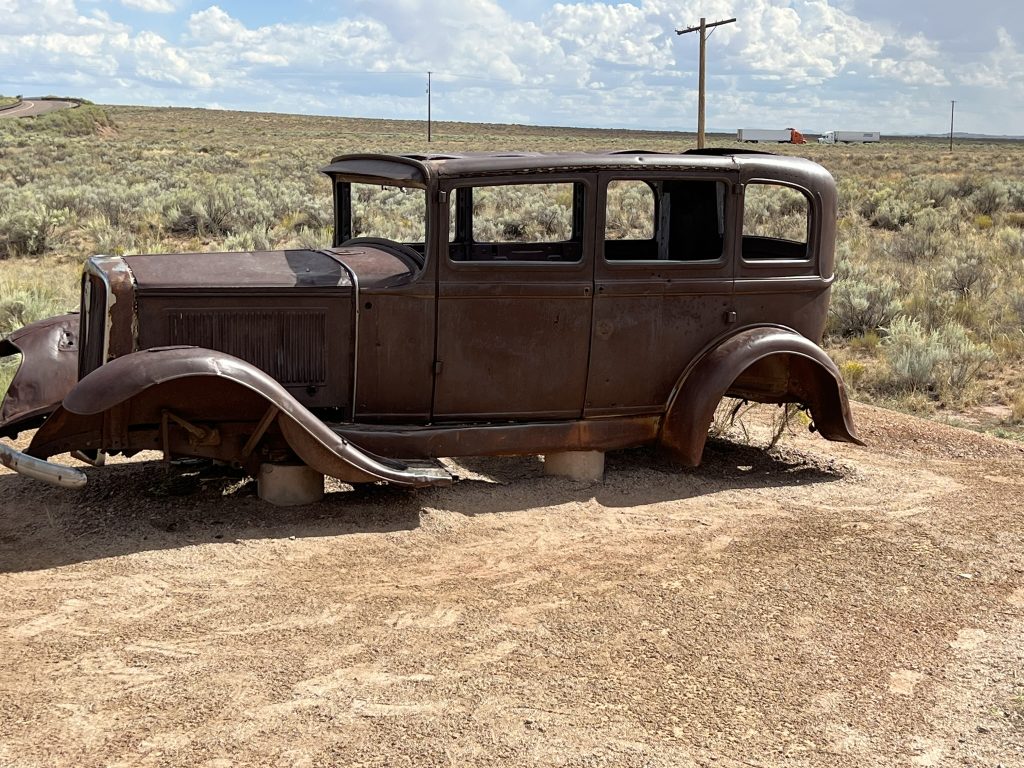
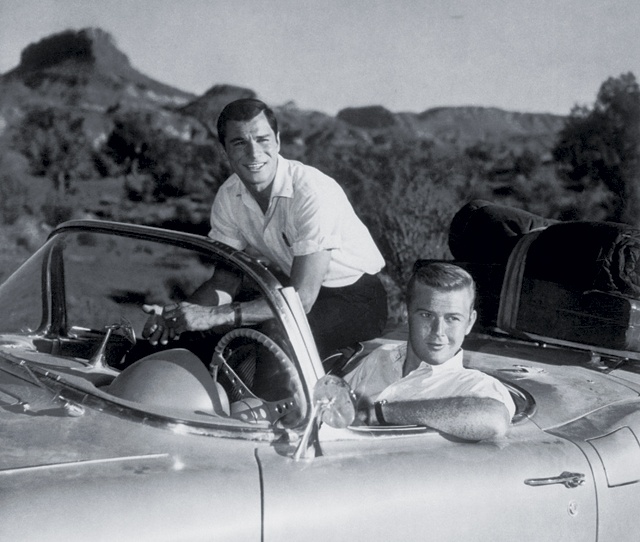
Glad you got to see petroglyphs, and interact with a Native American. We had a Native American guide in monument valley, he took us to an area where his mom was weaving native rugs. Something I won’t forget.
Your plans changed, but, you still had a great trip.